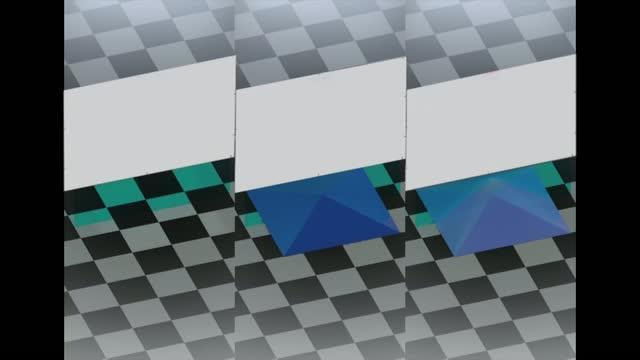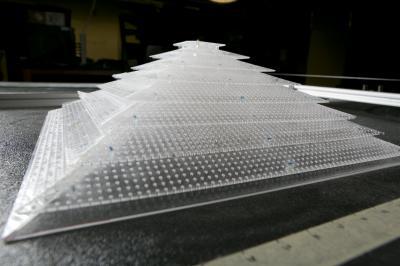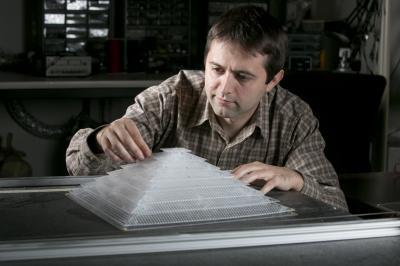To achieve this new trick, Cummer and his colleagues turned to the developing field of metamaterials—the combination of natural materials in repeating patterns to achieve unnatural properties. In the case of the new acoustic cloak, the materials manipulating the behavior of sound waves are simply plastic and air. Once constructed, the device looks like several plastic plates with a repeating pattern of holes poked through them stacked on top of one another to form a sort of pyramid.
To give the illusion that it isn't there, the cloak must alter the waves' trajectory to match what they would look like had they had reflected off a flat surface. Because the sound is not reaching the surface beneath, it is traveling a shorter distance and its speed must be slowed to compensate.
"The structure that we built might look really simple," said Cummer. "But I promise you that it's a lot more difficult and interesting than it looks. We put a lot of energy into calculating how sound waves would interact with it. We didn't come up with this overnight."
To test the cloaking device, researchers covered a small sphere with the cloak and "pinged" it with short bursts of sound from various angles. Using a microphone, they mapped how the waves responded and produced videos of them traveling through the air.

This video demonstrates the difference in how sound waves act with and without the acoustic cloak in their path. The red and blue lines represent the high and low points of the sound waves. As they return to the top of the frame, notice how the profile of the sound waves on the left with nothing in their way closely matches the profile on the right after interacting with the acoustic cloak. In contrast, the center trial shows the deformation of sound waves that occurs with an uncloaked sphere in their path.
(Photo Credit: Duke University)
Cummer and his team then compared the videos to those created with both an unobstructed flat surface and an uncloaked sphere blocking the way. The results clearly show that the cloaking device makes it appear as though the sound waves reflected off an empty surface.
Although the experiment is a simple demonstration showing that the technology is possible and concealing an evil super-genius' underwater lair is a long ways away, Cummer believes that the technique has several potential commercial applications.
"We conducted our tests in the air, but sound waves behave similarly underwater, so one obvious potential use is sonar avoidance," said Cummer. "But there's also the design of auditoriums or concert halls—any space where you need to control the acoustics. If you had to put a beam somewhere for structural reasons that was going to mess up the sound, perhaps you could fix the acoustics by cloaking it."

This is a close-up view of the 3-D acoustic cloak. The geometry of the plastic sheets and placement of the holes interacts with sound waves to make it appear as if it isn't there.
(Photo Credit: Duke University)

Bogdan Popa, a graduate student in electrical and computer engineering, shows off the 3-D acoustic cloak he helped design and build as a member of Steven Cummer's laboratory.
(Photo Credit: Duke University)
Source: Duke University